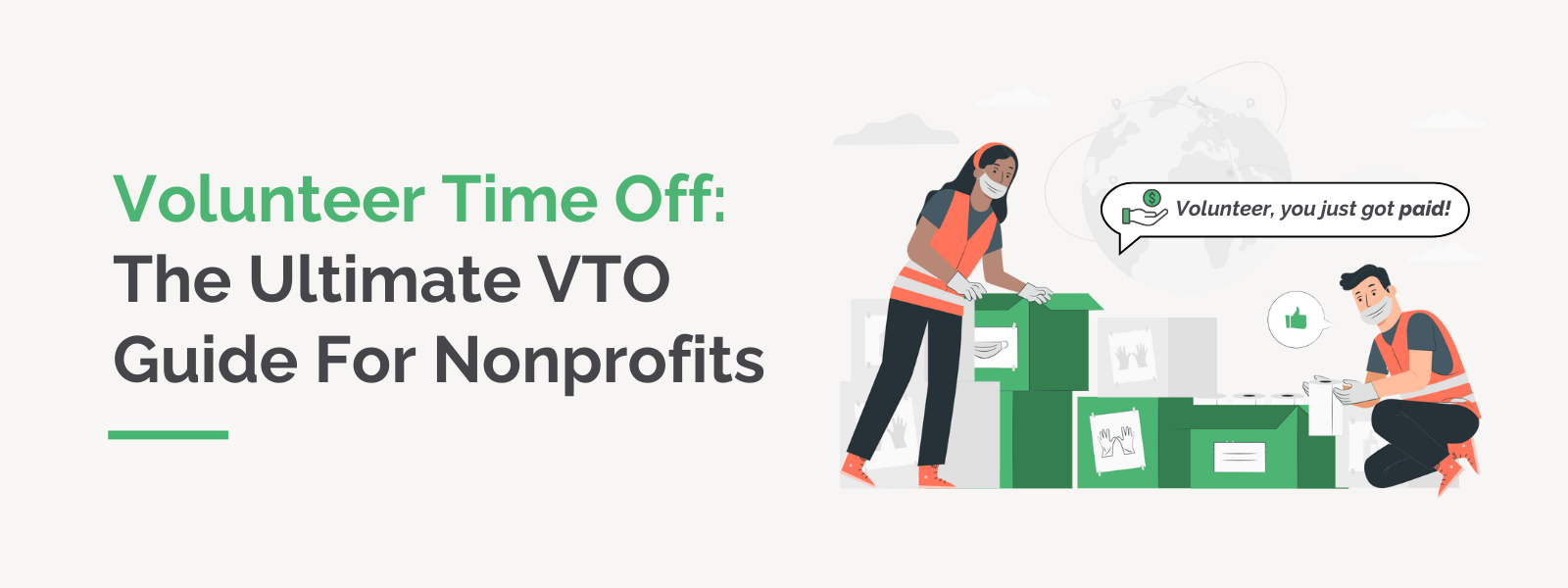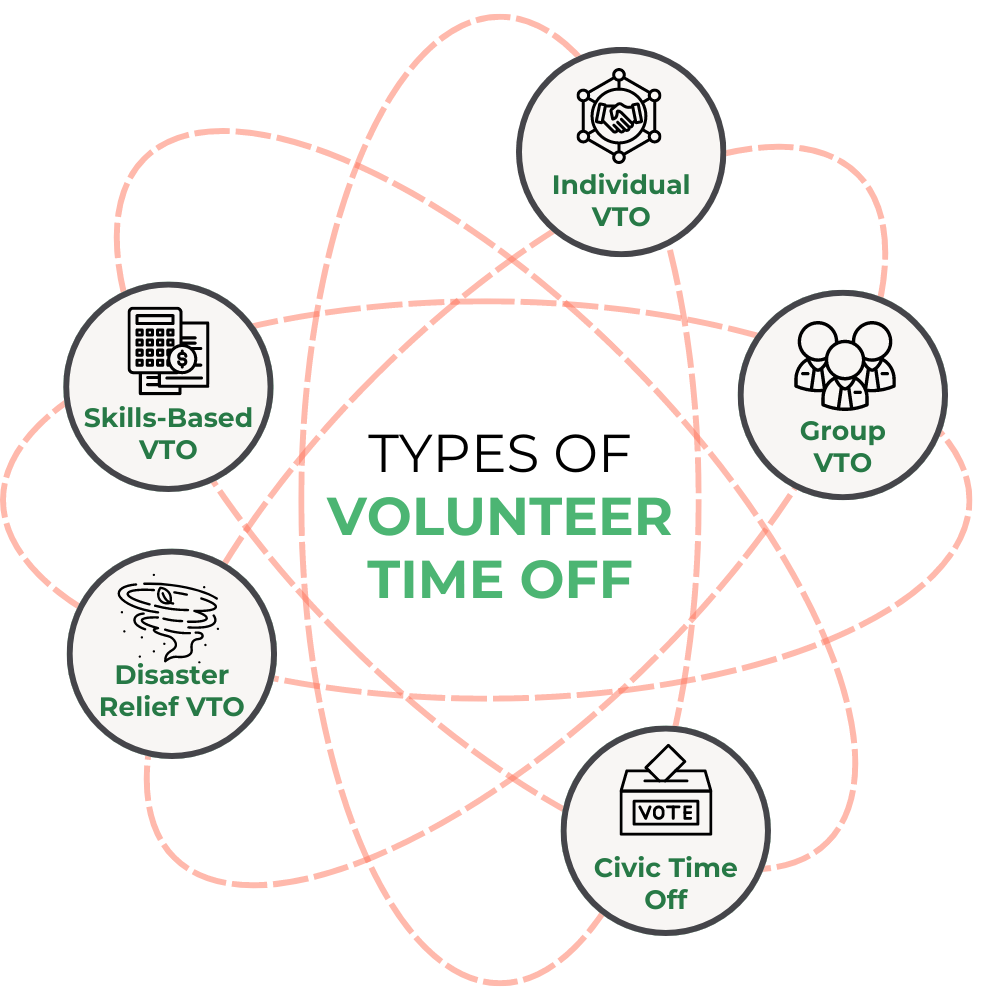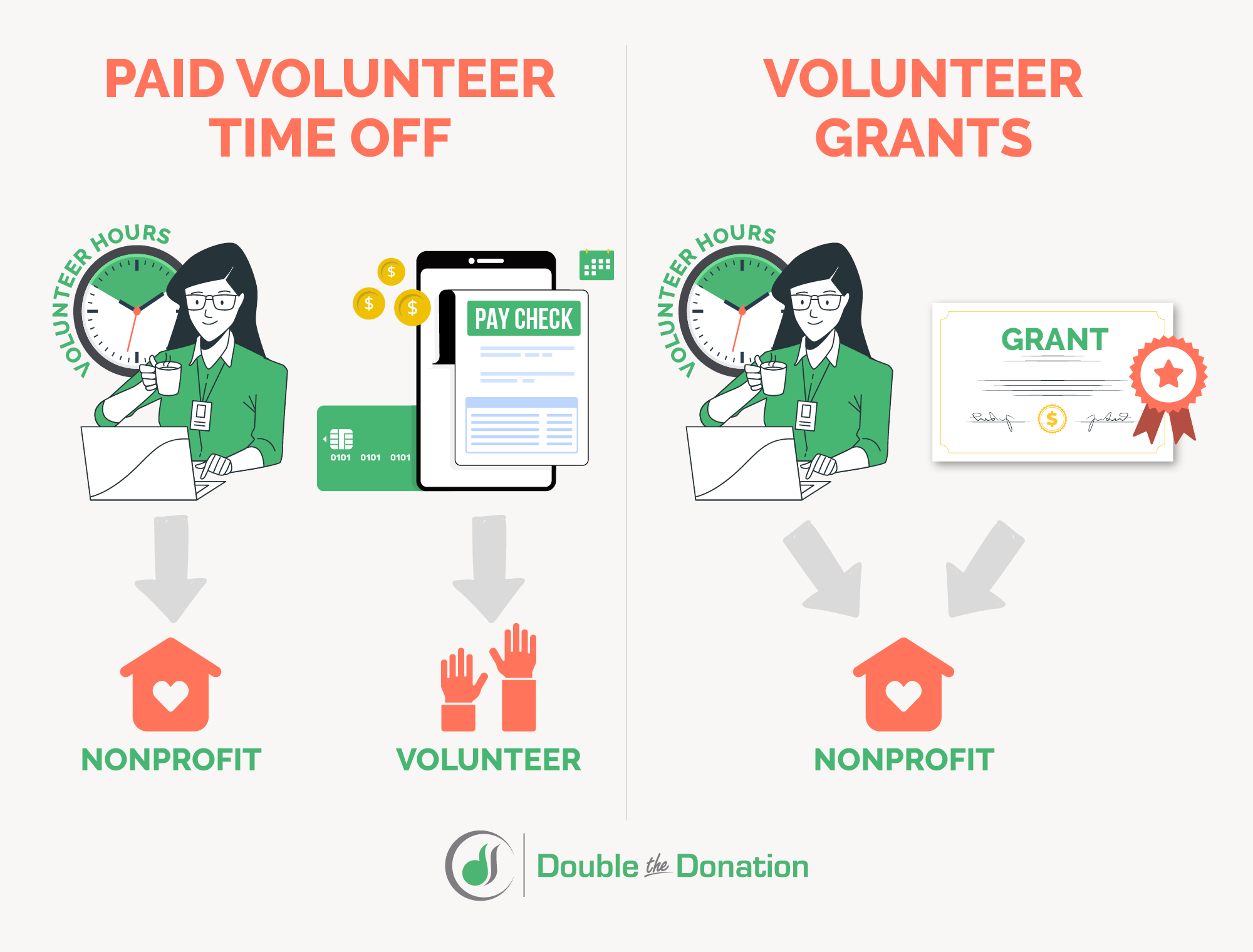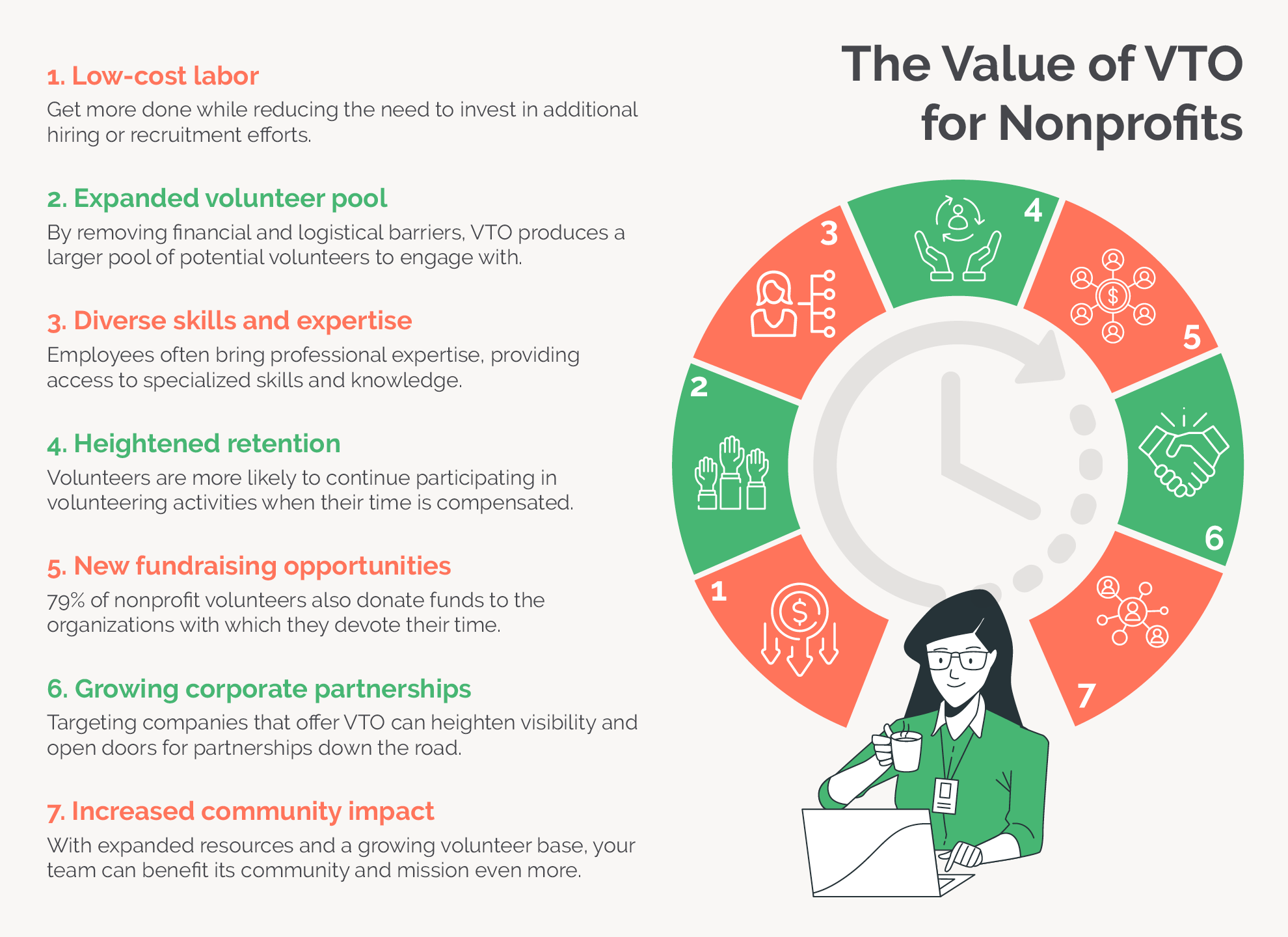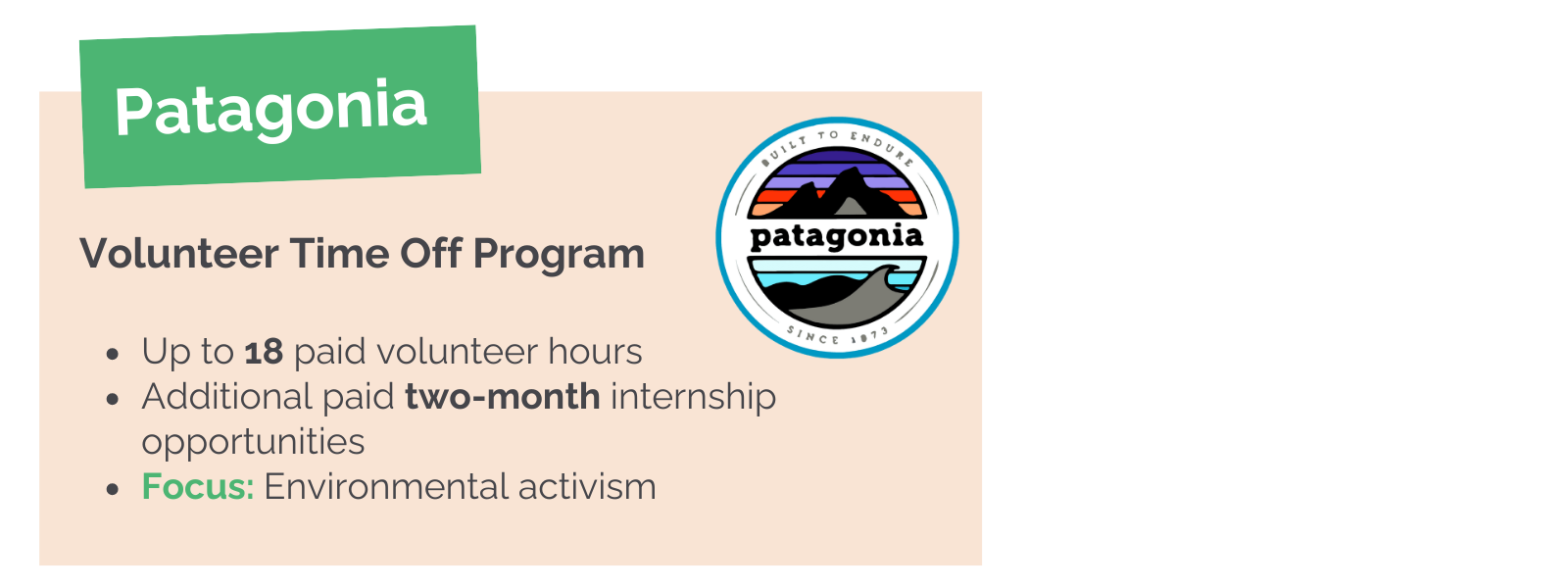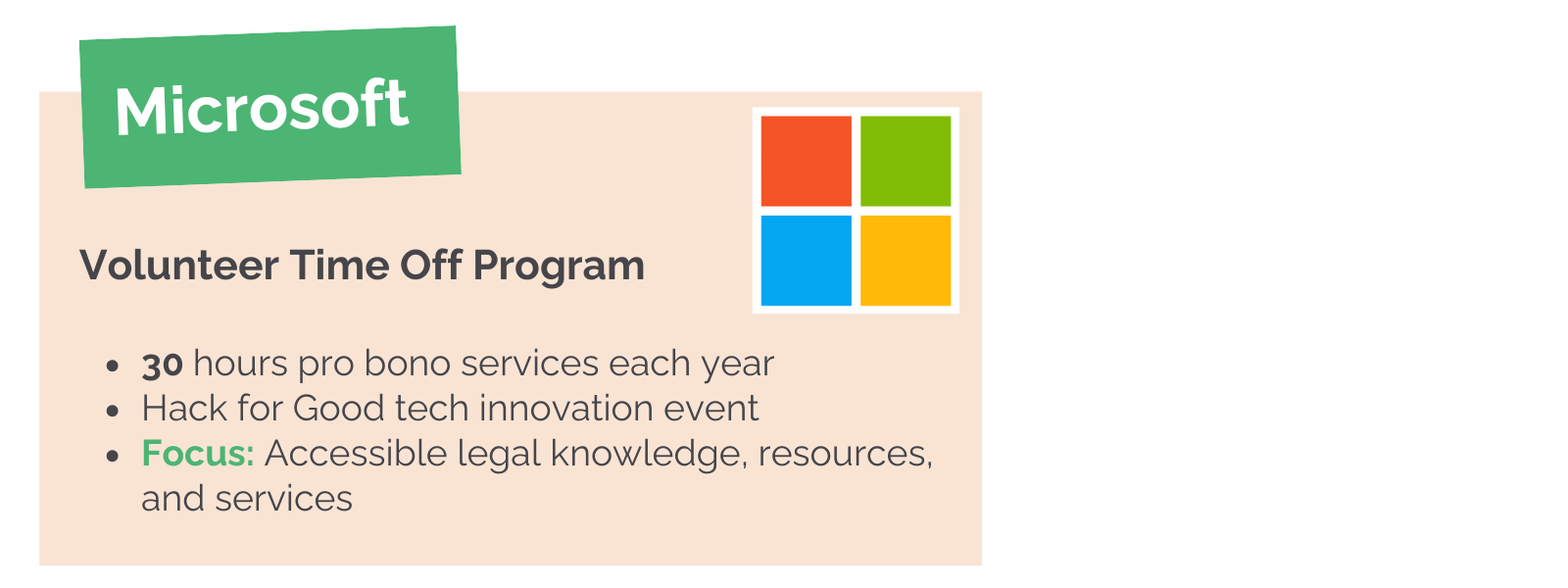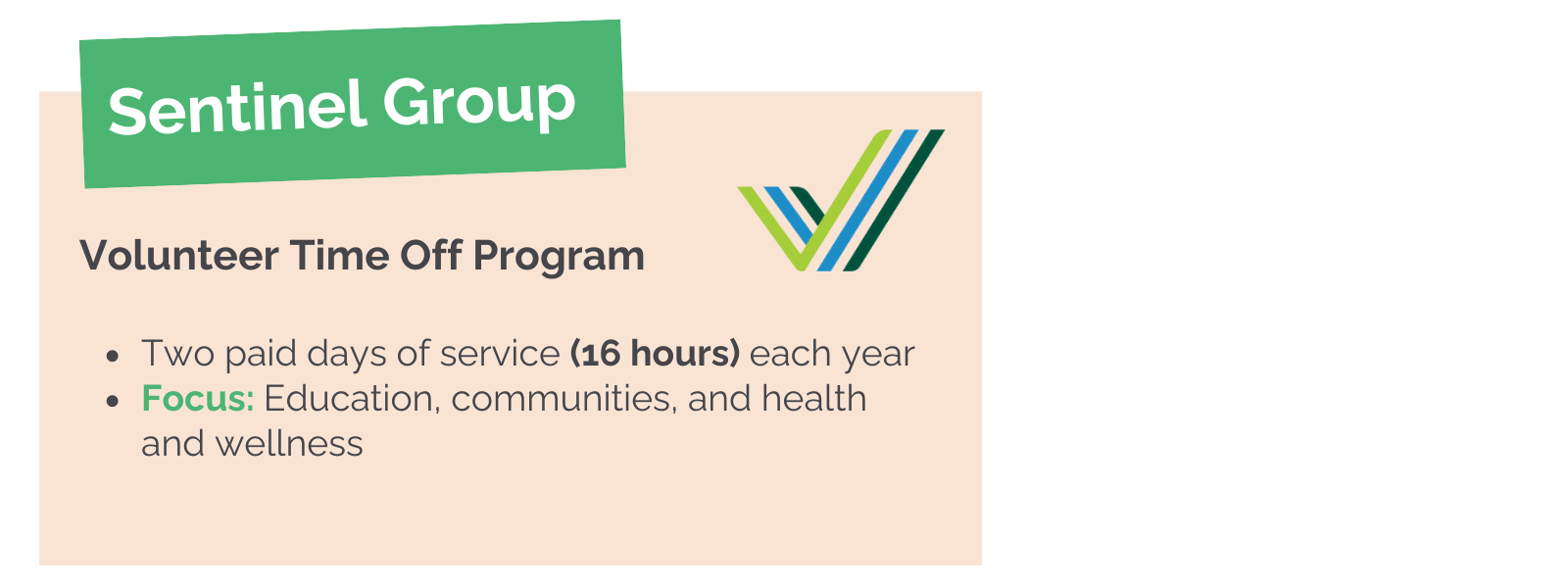Volunteer Time Off | The Ultimate VTO Guide For Nonprofits
In today’s developing corporate landscape, businesses are constantly on the lookout for new ways to engage their employees, differentiate their brands, and increase their overall revenue. One powerful tool that’s emerged as a way for companies to reach these objectives is corporate volunteerism—and, specifically, offering paid volunteer time off (or VTO) for their employees.
As a nonprofit professional, these types of programs present a lucrative opportunity to incentivize volunteerism, foster meaningful supporter relationships, and expand your mission reach. However, understanding how to make the most of these endeavors and navigate the intricacies of the programs can seem daunting. That’s why we’ve crafted this comprehensive resource.
Designed to illuminate the path toward leveraging volunteer time off to its fullest potential, this guide will cover the following:
- What is Paid Volunteer Time Off?
- What to Know About VTO Program Guidelines
- How Do Nonprofits Benefit From Volunteer Time Off?
- Top 5 Employers With Paid Volunteer Time Off Programs
- Promoting VTO Opportunities to Supporters
Ready to learn more about corporate volunteer incentives like VTO? Let’s get started with the basics.
What is Paid Volunteer Time Off?
Also known as employer-sponsored volunteerism or paid-release time volunteer programs, paid volunteer time off is a strategic mechanism through which companies empower employees to partake in philanthropy during standard work hours.
Companies that offer these programs generally establish a certain number of VTO hours team members accrue each year for designated volunteer projects—above and beyond any existing paid leave or sick time. This approach not only encourages employee engagement but also strengthens corporate citizenship and fosters social responsibility within the workforce.
By providing paid time for volunteering, companies involve their teams in giving back to their communities. According to the Society for Human Resource Management, the portion of companies offering VTO as part of their benefits package increased by more than 2 in 3 over the last decade. Today, an estimated 66% of surveyed employers provide some sort of paid time off in their benefits packages for employees to engage in volunteer events.
Why? Research shows that 96% of employees who participate in corporate volunteerism report having a positive company culture. And one of the best ways for businesses to encourage participation among staff is to turn it into a paid day out of the office!
Types of VTO Programs
Like volunteerism itself, there’s no single way to participate in a VTO program. While the specifics tend to vary from one company to the next, many initiatives fall into one of the following categories:
- Individual VTO — Paid time off designed to encourage a company’s employees to spend time volunteering on the clock. Businesses offering VTO empower staff to give back independently, contributing unique skills and expertise without missing a day of pay. Plus, the programs allow individuals to choose organizations or causes that align with their interests and skill sets (like yours!).
- Group volunteer events — Business or team-wide volunteer events that involve a company’s employees participating in organized activities or projects collectively. These types of events promote teamwork, morale, and camaraderie among employees. At the same time, it allows volunteers to make a collective impact on larger-scale projects or initiatives.
- Skills-based volunteerism — Also referred to as pro bono services, employees use professional skills to volunteer for a cause or organization beyond traditional volunteer activities. For example, a marketing specialist could assist in developing a promotional strategy, or a CPA may donate time to facilitate an organization’s accounting efforts.
- Disaster response volunteering — Employees assisting with relevant and timely relief efforts in the event of a natural disaster or humanitarian crisis. This may include supply distribution, shelter assistance, search and rescue, first aid, and more to provide aid to communities affected.
- Civic time off — Paid time off designated for employees to participate in civic activities such as voting or serving on a jury. Companies offering this benefit demonstrate their commitment to responsible citizenship and engagement.
Once you’ve established which of your supporters qualify for volunteer time off, take a look at the program guidelines to determine—and communicate—the types of activities included in the programming.
Paid VTO vs. Volunteer Grants
Corporate volunteer grants and paid volunteer time off each represent a powerful way for companies to incentivize volunteerism among their staff. However, the two programs differ in key ways, and it’s important to understand the distinctions as you craft your organization’s engagement strategy.
First, VTO refers to a company policy where employees are granted paid time off work to participate in qualifying volunteer activities. Through these programs, employees can donate time to their favorite nonprofits and engage in community service without sacrificing their regular pay.
Conversely, volunteer grants are donations made by companies to nonprofit causes in recognition of their employees’ volunteer efforts. The biggest difference between the two is that funding is contributed to the organizations with which employees volunteer rather than to employees’ own paychecks.
What to Know About VTO Program Guidelines
Each company that offers volunteer time off first establishes a set of criteria or guidelines that dictate qualifying employees, nonprofits, activities, and more. For a nonprofit team, understanding common program guidelines enables fundraisers to identify VTO opportunities within their network.
Fortunately, most companies provide their employees with helpful documentation regarding eligibility and instructions for the program. These policies generally include the following:
- Eligible employees — Companies may implement regulations regarding full-time versus part-time team members or establish a minimum duration of employment prior to employees becoming eligible.
- VTO hours accrued — Some companies provide a set number of hours employees receive each year, while others allow it to accrue in smaller increments. Regardless, a recent study found that participating companies provide an average of 20 VTO hours per year per employee.
- Qualifying organizations and activities — The mission or cause of the organization an employee volunteers with can play a role in an individual’s eligibility for time off, too. For example, most 501(c)(3) nonprofits qualify, though strictly political or religious organizations often do not. Similarly, there may be limits placed on the scope of activities covered under VTO.
- Pre-approval or request processes — Most companies require some sort of request process for their VTO programs. Make sure eligible supporters are aware of the opportunity, and take steps to guide volunteers through their submissions as much as possible.
Take a look at this sample VTO template to get a feel for the types of programs you’ll likely encounter. This policy provides a number of exclusions to the program, too—including coaching a child’s sports team, attending a PTA meeting, or participating in a religious conference.
By familiarizing yourself with corporate VTO guidelines, your organization can effectively engage corporate volunteers and maximize the impact of their volunteer efforts.
How Do Nonprofits Benefit From Volunteer Time Off?
Many organizations rely on dedicated volunteers to ensure smooth operations. Volunteers generously contribute their time, energy, and skills to benefit communities. As a result, volunteerism provides essential support without added financial costs. This expands capacity, fosters engagement, enhances programming, and more.
Paid volunteer time off (or VTO) programs go a few steps further to drive an even greater impact. These benefits include:
Low-cost labor — Empower your team to get more done for your organization while reducing the need to invest in additional hiring, recruitment, or labor efforts. According to volunteerism research, the value of a single volunteer hour is currently estimated to be $31.80.
Expanded volunteer pool — By removing financial and logistical barriers, VTO produces a larger pool of potential volunteers to engage with. That means more volunteers signing up to participate!
Diverse skillsets and expertise — When it comes to volunteerism, employees often bring their professional expertise to the table (think: copywriting, graphic design, accounting, legal services, etc.). This ultimately provides increased access to specialized skills and knowledge.
Heightened retention — Volunteers are more likely to continue their support when their time is compensated. Highlight the availability of VTO to keep supporters coming back time and time again.
New fundraising opportunities — According to Volunteer Hub, 79% of people who volunteer donate to the organization as well. VTO programs help engage volunteers with your cause, and your team can begin stewarding them as donors, too!
Growing corporate partnerships — Targeting VTO companies can heighten visibility and open doors for partnerships. Consider whether participating employers also supply matching gifts, volunteer grants, and other types of programs.
Increased community impact — With expanded resources and a growing supporter base thanks to corporate volunteer programming like VTO, your team can benefit its community and mission even more.
Top 5 Employers With Paid Volunteer Time Off Programs
Tons of businesses offer paid volunteer time for their employees. Becoming familiar with top VTO programs allows your team to identify engagement opportunities, access valuable resources, and establish strategic partnerships.
Check out these five examples of generous employers—and see if your volunteers (or donors!) work for these companies.
1. Patagonia
Also offers matching gifts: ✔️
Also offers volunteer grants: ❌
Patagonia is an outdoor clothing and recreation gear retailer based in Ventura, California. With a focus on environmental activism, the company engages employees by offering up to 18 paid volunteer hours annually.
Not to mention, Patagonia also encourages employees to participate in an additional two-month Environmental Internship Program with the environmental group of their choice (while maintaining full benefits!). Additionally, Patagonia matches employees’ monetary donations to a wide range of nonprofits as well—with each team member qualifying for up to $10,000 in matching gift funds per year.
2. Thomson Reuters
Also offers matching gifts: ✔️
Also offers volunteer grants: ✔️
Thomson Reuters is a Canadian-based multinational information and media conglomerate. With more than 25,000 employees across hundreds of locations worldwide, the company offers a number of corporate-sponsored ways for team members to give back to their communities.
While full-time team members receive two paid days off for volunteer activities each year, the program policy dictates that part-time staff (specifically those regularly scheduled for more than 20 hours per week) qualify for a prorated number of VTO hours as well.
3. GM Financial
Also offers matching gifts: ❌
Also offers volunteer grants: ✔️
Also offers P2P fundraising matches: ✔️
GM Financial is a financial services provider and subsidiary of General Motors with extensive operations based in North and Latin America, Europe, and China. As a way of giving back to society, GM Financial incentivizes volunteerism among employees in a few ways—including both volunteer grants and paid time off to volunteer.
The good news? Full-time and part-time employees can participate! Each quarter, full-time GM Financial staff receive 8 hours of volunteer time off, while part-time workers receive 4.
Meanwhile, through its volunteer grant program, employees can earn $10 for every hour they donate to a nonprofit. However, the program policy does specify that dollars for doers (or volunteer grants) may only be requested for volunteer activities that take place outside of working hours.
4. Microsoft
Also offers matching gifts: ✔️
Also offers volunteer grants: ✔️
Microsoft Corporation is a multinational corporation with a focus on leading operating systems, productivity applications, and web browsers. The company is also known for its standout philanthropy—and, specifically, its widespread employee involvement.
In a single year, nearly 50,000 Microsoft employees volunteered more than 1 million hours of their time with charitable organizations worldwide. Through its paid volunteer time off program, each team member receives 30 hours to dedicate to pro bono work annually.
5. Sentinel Group
Also offers matching gifts: ✔️ (With auto-submission!)
Also offers volunteer grants: ❌
Sentinel Group, formerly known as Sentinel Benefits & Financial Group, is a Massachusetts-based business management consulting firm. In order to engage their employees and incentivize community service, Sentinel Group launched a volunteer time off program. Through the initiative, each team member receives 16 hours (or two full days) worth of PTO to devote to volunteer activities.
Promoting VTO Opportunities to Supporters
The rate at which a company’s staff are involved in corporate volunteer initiatives can vary drastically from one employer to the next. As a nonprofit, one of the best things your team can do to increase participation is to begin driving awareness of the programs with smart marketing and promotional efforts.
Here’s what we recommend!
1. Share about volunteer time off programs on social media.
Your organization’s social media profiles are going to be some of your greatest assets when it comes to driving awareness of VTO opportunities on a mass scale. Sharing information about paid volunteer time off programs online can be just what you need to inspire action among your followers.
As usual, remember to use engaging visuals and compelling storytelling strategies to capture and retain your audience’s attention. You might also choose to share success stories of team members who have previously participated in VTO activities and highlight the tangible impact they’ve made for your cause. Then, be sure to link out to additional resources (such as a dedicated page on your website) for interested supporters to learn more.
2. Create or optimize a dedicated Volunteers page on your website.
Speaking of, creating a dedicated web page for all things volunteerism (and volunteer incentives) allows you to establish a centralized hub for volunteer-related resources. If you already have a volunteers page on your site, you’ll want to incorporate information about paid volunteer time off programs to best market the opportunity to your audience.
Be sure to illustrate the positive impact of corporate volunteerism on your mission and provide additional resources and information on how supporters can get involved. In doing so, you can reinforce your organization’s commitment to collaboration and volunteerism, too!
3. Leverage employer data to identify VTO opportunities.
Your supporters’ employment data contains a wealth of information about available engagement opportunities—from matching donations to supplying paid time for volunteering. Use the information to uncover contacts in your database who work for companies with VTO. Then, adjust your strategy accordingly.
If you already know where a volunteer works, take a moment to look into the company’s volunteer incentive programs. If you don’t have an individual’s employer on file, consider a corporate giving database tool or explore an employer append service to help fill in any gaps.
4. Implement personalized outreach for eligible supporters.
Once you’ve determined which supporters work for companies with VTO programs, initiating tailored communications can go a long way. But you don’t just want to reach out to existing volunteers! In fact, identifying and engaging with donors working for VTO companies can be a surefire way to tap into new opportunities for support.
Be sure to focus your outreach while highlighting the benefits of paid volunteerism (i.e., a meaningful experience and a fun day off work!). Then, encourage recipients to take advantage of the programming. Provide information on upcoming volunteer activities and clearly communicate how supporters can get involved.
5. Familiarize yourself with local businesses offering volunteer time off.
Local businesses can become some of your most valuable corporate partners. Research companies in your area and note those offering VTO programs for their employees. (Not sure where to start? Reach out to professional services firms in your area—such as advertising, law, or accounting.)
From there, you’ll want to establish connections within the human resources department or corporate social responsibility team. Start your conversation by learning more about their volunteerism initiatives and identify opportunities for collaboration. Then, pitch a volunteer event or activity with which to engage the business’s staff through VTO.
6. Encourage volunteers at VTO companies to organize group activities.
Let’s say you have an existing volunteer who works for a large company with a paid VTO policy. One of the best ways to attract eligible volunteers is to empower supporters to rally their colleagues.
Sometimes, all you have to do is encourage a single volunteer to organize a group activity and get their teammates on board.
Be sure to provide resources to assist in coordinating volunteer projects, like team-building exercises, community service days, or fundraising events. By setting up your volunteers to mobilize their coworkers, you can maximize the impact of available VTO programs and foster a culture of collaborative volunteerism.
Final Thoughts & Additional Resources
When nonprofits and companies work together, the opportunities for social impact are endless. Paid volunteer time off programs are one example of a way businesses are meeting the increased demand for corporate responsibility. Matching gifts and volunteer grants are a few others.
Now, it’s time to tap into the VTO programs in your organization’s network. Your team can establish solid corporate partnerships, better engage with volunteers, and achieve your mission with greater efficiency.
Good luck!
There’s more to corporate engagement than paid volunteer time off. Dive into these other generous programs and initiatives to uncover new opportunities for your organization:
- FREE DOWNLOAD: The Ultimate Guide to Matching Gifts. This must-read resource provides comprehensive insights into matching gifts, empowering organizations to make the most of these programs. Explore practical tips and strategies to navigate donation matching here!
- Maximizing Impact With Corporate Volunteer Grant Programs. Did you know you can collect corporate funds when a company’s employees volunteer with your cause? Dive into this in-depth exploration of volunteer grant programs and discover the power of volunteerism to drive positive change.
- Navigating Corporate Philanthropy | A Nonprofit Playbook. Forging successful corporate partnerships is a must. This complete guide supplies actionable guidance for navigating corporate philanthropy. Learn to identify prospects, craft proposals, make your pitch, and foster mutually beneficial relationships.
